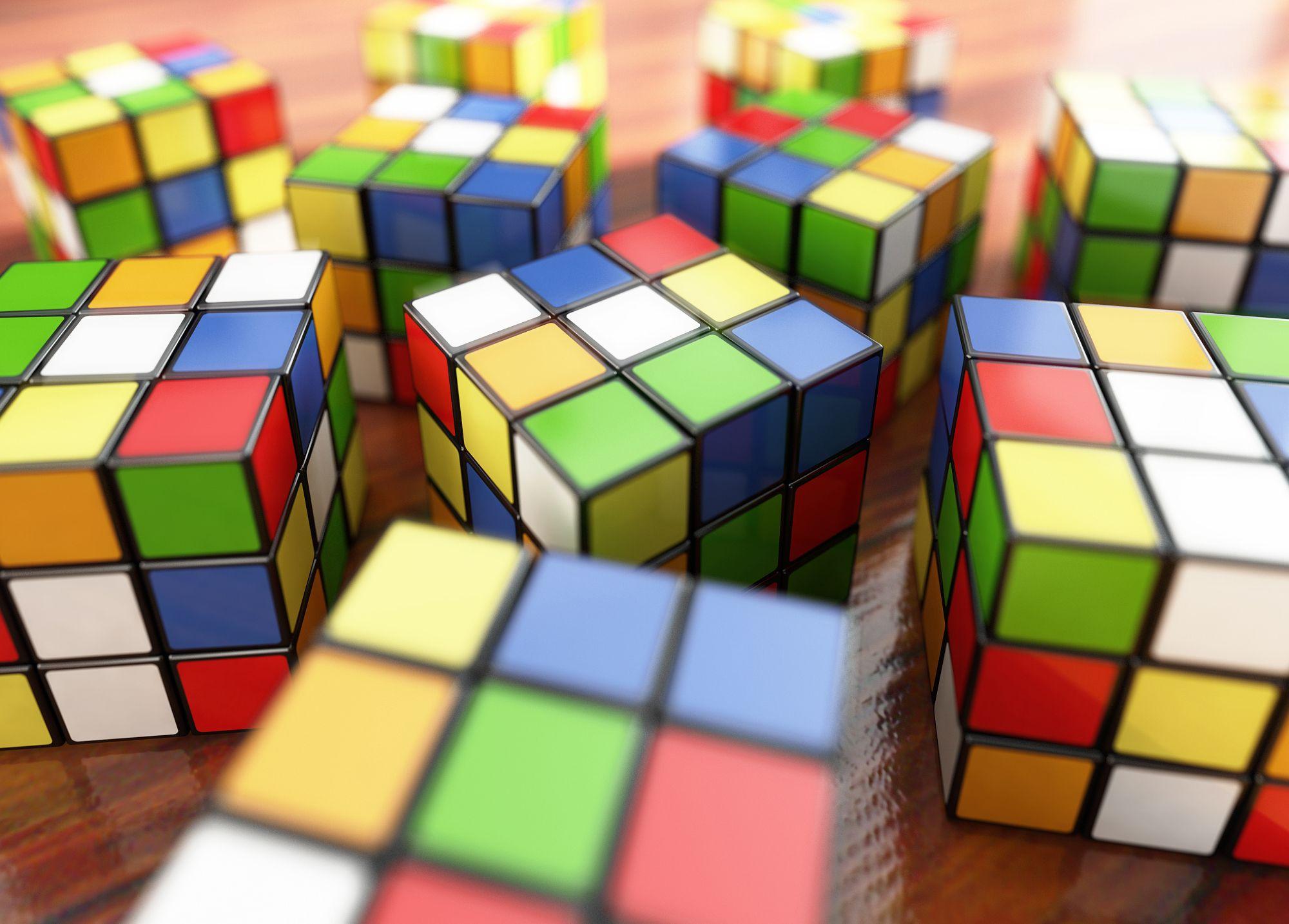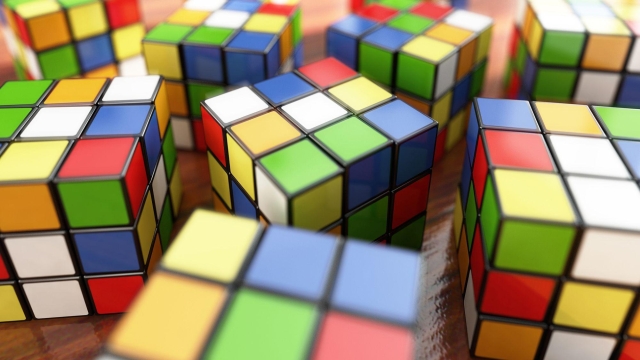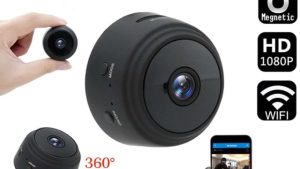Introducing the Enigmatic Rubik’s Cube: Unlocking Its Secrets
Are you ready to immerse yourself in the captivating world of the Rubik’s Cube? This mesmerizing puzzle has sparked curiosity and fascination in minds worldwide since its creation. Whether you’re an aspiring speed cuber aiming to break records or simply seeking to unravel this enigmatic challenge, there’s something exhilarating about conquering the Rubik’s Cube.
The Rubik’s Cube, also known as the magic cube or simply Rubik’s puzzle, was invented by Ernő Rubik, a Hungarian architect, in 1974. What initially began as a tool to explain three-dimensional geometry eventually transformed into a global phenomenon, captivating millions with its seemingly insurmountable complexity. With its six faces, each composed of nine vibrant-colored squares, the Rubik’s Cube presents a seemingly straightforward arrangement that holds an astounding number of potential combinations.
Speed cubing, a term that has gained momentum over the years, refers to the art of solving the Rubik’s Cube as quickly as possible. Speed cubers have dedicated countless hours honing their skills, developing specialized techniques, and even utilizing custom-designed speed cubes to achieve lightning-fast solves. The speed cubing community is vibrant and spirited, with competitions held worldwide, pitting cubers against one another to see who can solve the cube in record-breaking time.
One key element driving the pursuit of faster solves is the evolution of speed cubes. Speed cubes, designed specifically for swift and smooth solves, boast features such as precision engineering, enhanced corner cutting capabilities, and improved stability. These cubes enable speed cubers to execute complex algorithms with greater fluidity, ultimately enhancing their solving times.
With the Rubik’s Cube at the center of our journey, we delve into the world of speed cubing, unraveling techniques, exploring the allure of customized speed cubes, and shining a light on the ever-expanding community of enthusiasts. Whether you’re a seasoned speed cuber or a curious beginner, join us as we unlock the secrets to mastering the Rubik’s Cube and discover the joys hidden within this intricate puzzle.
Understanding the Basics
In this section, we will delve into the fundamental concepts that form the foundation of solving the Rubik’s Cube. By gaining a clear understanding of these basics, you will be well-equipped to tackle more advanced techniques and approaches in speed cubing.
To begin, let’s discuss the structure of the Rubik’s Cube itself. It is a three-dimensional puzzle comprised of smaller cubies, with each face of the cube being made up of nine individual stickers. These stickers can be of different colors, typically six in total. The main goal is to restore each face of the cube to a single solid color by manipulating the cubies and rotating the different layers of the cube.
19×19
When it comes to speed solving the Rubik’s Cube, the choice of an appropriate cube is crucial. Speed cubes are specially designed for fast and smooth rotations, enabling speed cubers to execute algorithms rapidly. These cubes often feature advanced mechanisms and lubrication to reduce friction and allow for seamless movements. Investing in a quality speed cube can greatly enhance your performance and overall experience.
Now that you understand the basic structure of the Rubik’s Cube and the importance of using a speed cube, it’s time to familiarize yourself with the essential solving techniques. There are various methods to approach solving the cube, with many speed cubers adopting methods such as the Fridrich Method or the CFOP method. These methods typically involve breaking down the solving process into several stages, tackling different aspects of the cube’s configuration one step at a time.
By mastering the basics of the Rubik’s Cube, including its structure, the benefits of using a speed cube, and familiarizing yourself with popular solving methods, you are now ready to dive deeper into the world of speed cubing. In the following sections, we will explore advanced solving techniques, tips for improving your speed, and strategies for optimizing your performance. Stay tuned for more exciting insights into the fascinating world of the Rubik’s Cube!
Keep in mind that practice and persistence are key to mastering the Rubik’s Cube. Have fun exploring the possibilities, and remember, with dedication and a solid understanding of the basics, you can become a true speed cubing expert!
Mastering Speed Cubes
In the world of Rubik’s Cube solving, one key aspect that can greatly enhance your speed and efficiency is the use of speed cubes. These specially designed cubes are optimized for quick and smooth movements, allowing for faster solves and improved performance.
Speed cubes are engineered with precision and attention to detail. The mechanisms inside these cubes are specifically designed to minimize friction and enable effortless turning. With their smooth rotation and enhanced corner cutting abilities, speed cubes allow cubers to execute algorithms with greater ease and accuracy.
One of the main advantages of speed cubes is their adjustable tension system. By adjusting the spring tension, cubers can customize the feel of their cube to suit their individual preferences. Finding the perfect balance between tension and stability is crucial in achieving faster solve times.
Moreover, speed cubes often utilize specialized lubricants to further enhance their performance. These lubricants reduce friction between the different pieces of the cube, allowing for smoother and faster turning. Some cubers even go the extra mile by experimenting with different lubricants to find the ideal one for their specific cube and solving style.

In summary, mastering the art of speed cubing goes hand in hand with utilizing speed cubes. These high-performance cubes offer superior maneuverability, adjustable tension, and improved lubrication, all of which contribute to faster solve times and an enhanced solving experience. So if you’re serious about taking your Rubik’s Cube solving skills to the next level, investing in a quality speed cube is definitely a step in the right direction.
Techniques for Speed Cubing
Layer-by-Layer Method: One popular technique for mastering the Rubik’s Cube is the layer-by-layer method. This method focuses on solving the cube one layer at a time. The first step is to solve a cross on one face, followed by completing the first layer. Next, you move on to solving the second layer, and finally, you tackle the third layer, often referred to as the "last layer." This method helps cubers develop an organized approach and a solid understanding of the cube’s structure.
Fridrich Method: Another technique commonly used by speed cubers is the Fridrich method, also known as CFOP (Cross, F2L, OLL, PLL). This method involves solving the cube in four stages. First, you solve the cross on one face while simultaneously inserting the four corners. Next, the F2L (First Two Layers) step aims to solve the first two layers of the cube together. After that, you move on to the OLL (Orientation of Last Layer), where the aim is to orient all the pieces of the last layer. Lastly, you apply the PLL (Permutation of Last Layer) algorithms to solve the cube completely. The Fridrich method is known for its efficiency and is preferred by many speed cubers worldwide.
Advanced Algorithms: As you progress in speed cubing, learning advanced algorithms becomes crucial for improving your solving time. Algorithms are sequences of moves designed to solve specific scenarios on the cube. Learning algorithms for different situations, such as solving corners or edges in specific positions, can significantly enhance your solving speed. Many resources, including online tutorials, books, and even dedicated speed cubing communities, offer a wide range of algorithms that can help you excel in speed cubing.
By exploring these different techniques and practicing regularly, you will gradually enhance your ability to solve a Rubik’s Cube quickly. Remember, speed cubing requires patience, concentration, and dedication, so keep challenging yourself and pushing the boundaries of your cubing skills. Good luck on your speed cubing journey!





